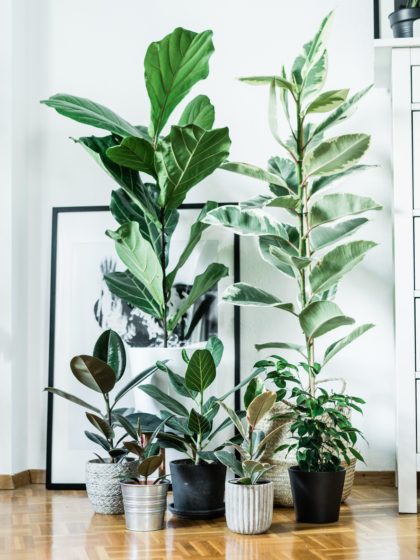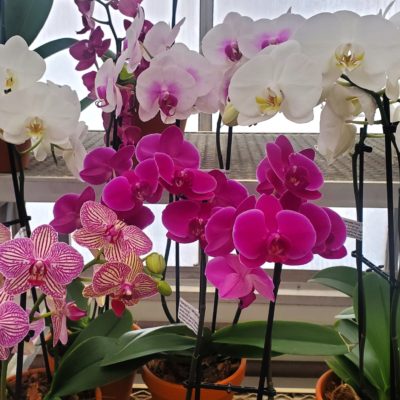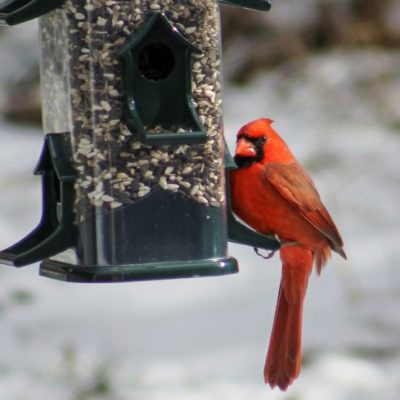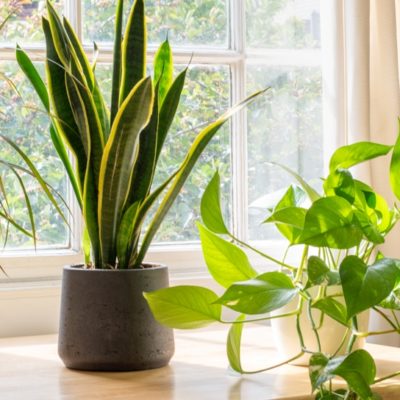
Tropical Houseplant Profile: Ficus Family
Did you know that there are over 800 varieties within in the Ficus family, but only about a dozen or so are available as Tropical Houseplants in North America? And the characteristics within this one plant family are incredibly diverse; if you put a Ficus Benjamina next to a Rubber Plant, chances are you’d never guess that they’re so closely related!
Members of the Ficus family can be found in tropical and sub-tropical areas around the world, primarily Asia, Africa, South America, and Australia; some varieties even grow on mountains! They start out their lives as ephiphytes, using other nearby trees as a type of support as they grow upwards through the forest’s canopy. They have air roots to collect moisture and nutrients from the air, and will often overtake their “host” tree as they get taller and stronger. So those weird shoots you see dangling from your Benjamina are actually air roots that will suck up moisture from the atmosphere!
Ficus are a fascinating species of tropical plant, and here are just some of our favourites:
Fiddle Leaf Fig (Ficus lyrata)
Light: Medium to Direct Light
Water: Let Dry Slightly then Water well
Fertilizer: All-Purpose Fertilizer monthly
A social media favourite! The extra large, glossy dark green foliage lend the perfect backdrop for photos, and look stunning even without the camera! In bush or tree form, Fiddle Leaf Figs make a statement in any bright room. Can shed its leaves if kept too wet, too dry, or not receiving enough light. Loves humidity so misting every day is beneficial. Handle this statuesque beauty with care as the large leaf nodes can break off. Known to be less temperamental than Ficus Benjamina.
Weeping Fig (Ficus Benjamina)
Light: Medium to Direct Light
Water: Let Dry Slightly then Water well
Fertilizer: All-Purpose Fertilizer monthly
The smaller-leafed cousin of the monstrous Fiddle Leaf Fig, Benjaminas are typically available as trees with either straight trunks or multiple trunks braided together. They can also be found in bush form or even in hanging baskets. Their foliage can be solid green or two-toned with chartreuse yellow, and loves extra humidity so be sure to mist these plants every day. Can be a bit temperamental; they’ll let you know if they don’t like their living conditions (too much or not enough light, kept too wet or too dry) by shedding their foliage. But once they’re settled and the initial stress of moving house is over, Benji’s can be trimmed to shape and stay happy for years to come.
Banana Leaf Fig (Ficus alii)
Light: Medium to Direct Light
Water: Let Dry Slightly then Water well
Fertilizer: All-Purpose Fertilizer monthly
The long, narrow green foliage of the Banana Leaf Fig are very similar to its cousin, Benji, while being a little less temperamental. Typically found in tree form, they make a beautiful statement in any bright room and will appreciate extra humidity so misting daily is beneficial. Can be trimmed to shape once they’ve adjusted to their new home.
Rubber Plant (Ficus elastica)
Light: Medium to Direct Light
Water: Let Dry Slightly then Water well
Fertilizer: All-Purpose Fertilizer monthly
Another darling of social media! The large, glossy foliage is famous for its near-black colouring, but can also be found in shades and combinations of green, white, and even shades of pink! This slow grower can be trimmed to shape and loves extra humidity, so misting daily is recommended. Rubber Plants can handle direct light but actually perform best in bright, indirect light. A perfect statement piece for any bright spot in your home or office.
Please note: not all varieties will be available at all times as our selection changes constantly and quickly. Most varieties of Ficus will experience leaf yellowing/browning and droppage in their first few weeks/months while they adjust to living in your home and office.
Fun Facts about Ficus!
- The Banyan Tree, or Ficus benghalensis, is the national tree of India. This ephiphyte is also known as a “strangler fig” for the way it grabs hold and eventually suffocates its host tree.
- Ficus Benjamina (Weeping Fig) is the official tree of Bangkok.
- Ficus lyrata (Fiddle Leaf Fig) can grow up to 50 feet tall in their natural habitat of western Africa.
- The fruit of the Edible Fig tree (Ficus carica) is actually multiple flowers that are held within a nearly enclosed vessel, known as a syconium. After pollination, each flower becomes a tiny fruit with its own tiny seed, which is what we see when we cut open a fig.





